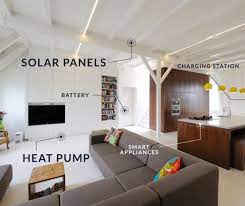We hear a lot about decarbonisation of industries or the grid, but one of the biggest changes is happening in the humble home. And it could be massive.
Our homes are going all electric right before our eyes and they’re increasingly doing it sustainably, efficiently and smartly. That means lower power bills for one, but also helps the country meet its climate goals.
According to ReWiring Australia the average Aussie home releases 11,000 kg of CO2-e greenhouse gas into the atmosphere every year and spends $5,248 per year on energy related costs. All electric houses using products like roof solar panels, home batteries, electric vehicles & efficient electric appliances cuts energy use by over two thirds and can save over $5,000 a year.
Australia is already the world’s top roof solar nation with over 30% uptake and I recently highlighted the tough new energy efficiency standards for homes being introduced right across the country.
Of course we’ve been in this space for a long time, not only creating Smart Wiring nearly 2 decades ago, but championing the country’s registered cablers as they electrify and automate the way homes operate.
Business is helping, launching an array of innovative smart home products to help run home energy seamlessly. Schneider Electric, for example, sells batteries, EV chargers, hybrid inverters, and a smart electrical panel to monitor & control electricity demands at the circuit level via a smartphone app so homeowners can switch between grid & battery power while making sure electrical loads stay under the limits of household wiring.
All sorts of companies from large ones like LG to small ones like Nest are making controlling the energy use in our homes and of every single appliance as easy as saying Hey Siri or turning on your phone no matter where you are.
But a lot has to occur to make the electric revolution happen, including modernising our electricity grids & rolling smart meters to handle homes and communities as their own green power hubs. But that’s another blog.
Cheers, John Fennell
